Overtourism has become a serious problem too many places in the world. It drives locals away from their homes, spoils natural wonders and disturbs the ecosystem. As a person that feels that I can´t breathe unless I travel, I still question myself if I should travel sometimes.
I once got stuck in the masses trying to walk out of the Taj Mahal. The number of people that tried to get out at the same time made us clog the opening and nobody could move.
This is something I only imagined happening at Black Friday in the US when the shops open. I guess I sort of only thought this would happen on film. But there I was.
I couldn´t move back or forth before someone started walking backward to create some space between all the people.
I have visited places that have been rated the best beaches in the world, but instead of seeing the beauty of the beach I was struck by the number of people everywhere and all the rubbish covering the sand. The beauty was gone.
However, for me, the real concern about overtourism started to grow after moving to the sunshine coast in Malaga in southern Spain.
I suddenly stood face to face with an ugly truth that threatened myself, the nature I love and the people around me. An ugly truth that threatens billions of people around the globe every day. We need to think sustainable travel if we want to continue to travel as much as we do.
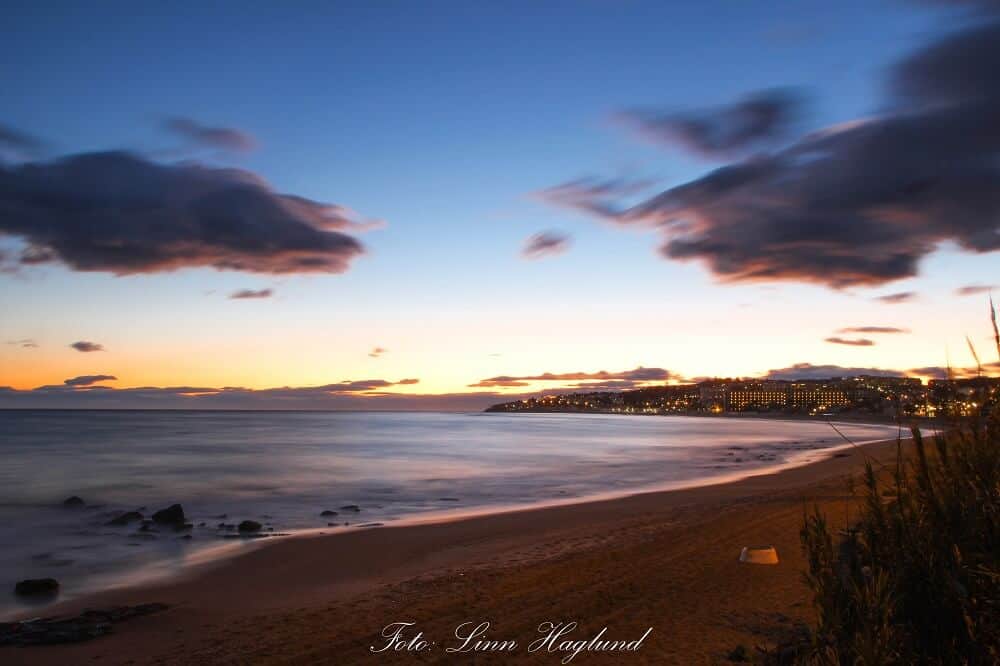
What is overtourism?
Overtourism is when too many tourists visit one specific destination at the same time. This is relative, though, because what does “too many tourists” mean? In short, the answer is: when the number of tourists exceeds what the destination is prepared to receive.
This could be that locals are pressed out of their community because prices become too high because of tourism or the rental market only offers holiday rentals. When locals can’t do their daily habits without standing in a queue for the tourist crowds. Further, “too many tourists” is when tourist attractions and landmarks become overcrowded or tourist vehicles clog the roads.
Furthermore, it is when delicate environments and nature destinations become degraded because of the number of tourists exploiting the area. Correspondingly, when the number of tourists scares away wildlife from their natural habitat. This includes marine life and when coral reefs are being destroyed by too many tourists stepping on them, that is overtourism.
Overtourism in Malaga and the Spanish sunshine coast
According to The Olive Press, tourism in Costa del Sol grew with 6,42% in 2017 from the year before. The popular tourist spot received a total of 17,6 million international and national tourists in 2016.
Each summer I shy away from the beach. They are so over-crowded that I get stressed out just thinking about it. The amounts of rubbish floating in dirty water at the beachfront are appalling. I can´t even imagine dipping my foot in that water. Also, the beach is so full of people that it is hard to find a spot for your towel without some stranger breathing you in the neck.
Nevertheless, the worst about all this is the rental market on the sunshine coast and Malaga city. The large demand for holiday rentals combined with the low-income rates in Andalusia pushes landlords to cancel long term rental contracts and rather rent out short term to tourists. Renting out to tourists during only a couple of months they can earn the same amount as in a whole year of long-term rental.
But what happens to the locals that get thrown out from their homes? Rental prices are constantly pushed up and there are hardly any long-term rental opportunities left at the coast. Families are left without homes. It is not unusual for a person in Andalusia to earn 600-700 euros netto a month. These days, it is extremely hard to find a one-bedroom apartment for less than 500-600 euros a month. The rental prices have nearly doubled since I moved here five years ago. For me, it is hard to explain how a mother of three is going to survive in Malaga.
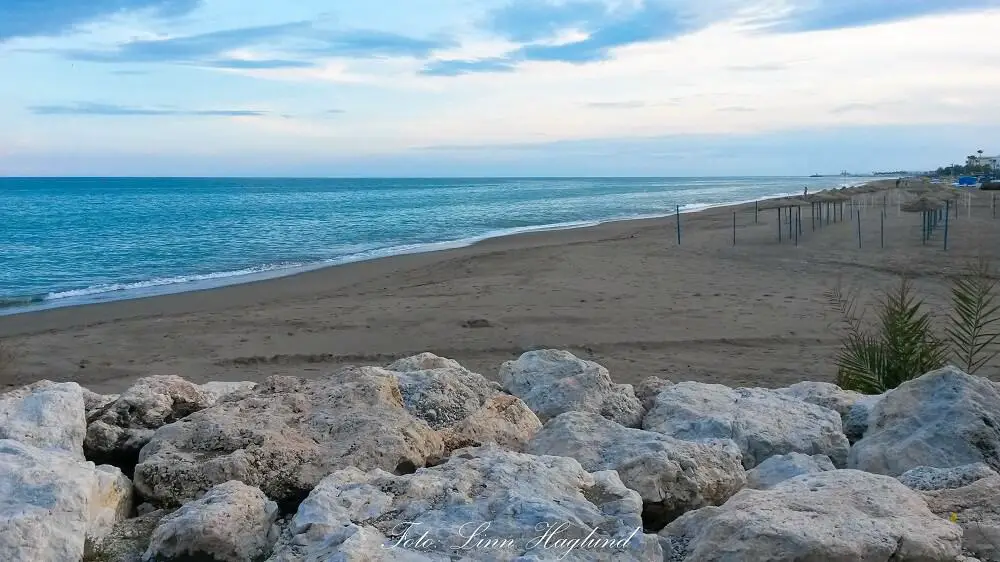
How can travelers fight overtourism?
It is an honest thing that most travelers, including myself, want to explore the known tourist destinations in the world. We have had dreams since we were young, we have pictured ourselves at our dream destinations. We discover new places to visit through beautiful photos on Instagram and we eagerly create our travel bucket lists.
The first step towards fighting overtourism, I believe, is awareness. When we are aware of the consequences and the threats that our actions cause, we can start thinking alternatively. Then we can start thinking about responsible travel and maybe even alternative destinations.
Second, try to avoid places that are suffering from overtourism, or visit these places in the low season. It is important to always respect the locals when you travel, and it is much easier to get a good connection to the locals when you travel offseason. Both the inhabitants and you as a traveler will benefit positively from this.
Further, you can be conscious about where you leave your money. If you buy as much as possible local made you support local businesses and entrepreneurs. You will also go back home with unique souvenirs.
If you go on tours at your destination, make sure you choose locally owned companies and even better; local owned environmentally friendly companies.
Finally, I want to mention accommodation. Try to stay locally where possible. However, many places suffer like Malaga. You can live locally and it still means renting an apartment that other locals have been thrown out from so the landlord can rent out more expensively to tourists. Often it is impossible for travelers to know this, but if you read up a bit on the destination you could get hold of such information so you could avoid supporting this.
Altogether, this is an issue that local governments and the tourism industry have to work with. As travelers, we can only do so much, but I still believe that we can affect quite a bit if we do our part.
Therefore, I have asked some of the leading travel bloggers within responsible travel to highlight the issue of overtourism around the world. Following, are the places they experienced the ugly truth about overtourism and what they recommend to do to fight it.
You might also like: Unethical animal tourism and what to do instead
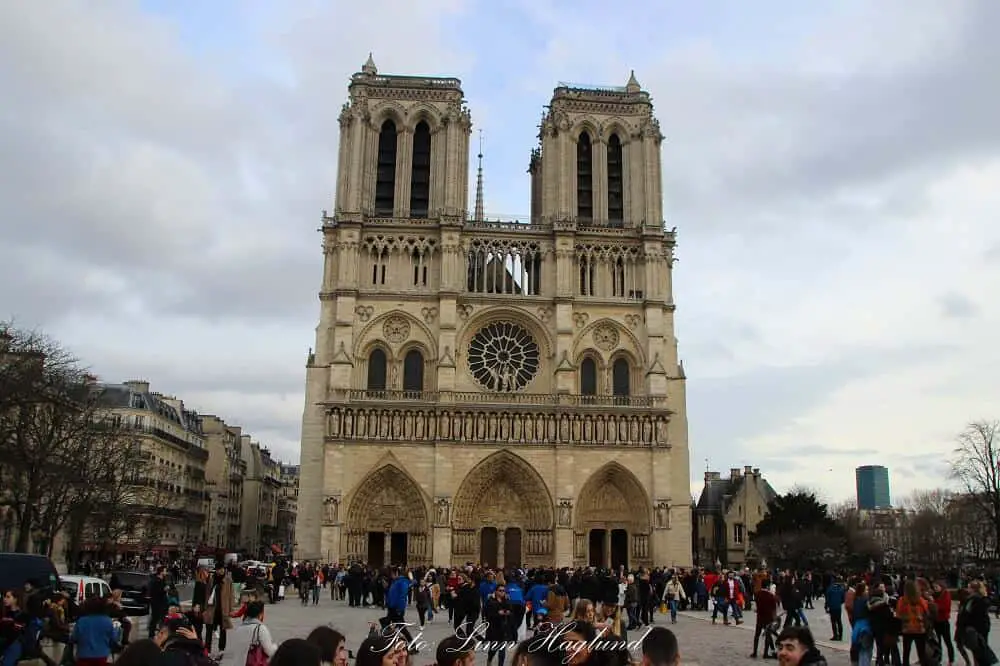
Kyoto in Japan
By Alyse from The Invisible Tourist
In recent years Japan has spiked the attention of a new wave of travelers, hitting a record number of 31 million in 2018. While Kyoto was once a place of tranquility and small-town charm, this has since been replaced with selfie sticks and unsustainable crowds of noisy people squeezing through the narrow streets.
Something I couldn’t stand seeing in Kyoto where fellow tourists treating the city as their own personal Disneyland. Everything was a tourist attraction in their eyes. To them, shoving a camera in a geisha’s face for a selfie was acceptable behavior, as was scrawling their name in the bamboo groves in Arashiyama, a UNESCO World Heritage site. I was horrified. It could be argued this sort of behavior has always been around, although the rate it is now happening is truly alarming.
Overtourism is becoming an issue for locals in Kyoto as tourists chase the perfect shot. I’ve seen people enter traditional restaurants to take photos and leave without ordering food. The air of peaceful shrines assaulted by loud visitors chatting away on their phones or to each other. Do they not see the irony here?
What happened to learning about the local etiquette? With more tourists to Kyoto than ever before, visitors are becoming lazy and relying on the anonymity of safety in numbers to get away with poor behavior. What may be acceptable at home can be offensive in Japan.
To help ease the burden of overtourism in Japan’s ancient capital, it’s essential to learn some basic Japanese etiquette. Where possible, it’s also best to visit during the off-season or shoulder periods. Major holidays like Golden Week (April-May) and New Year’s should be avoided. If you’re keen to chase the cherry blossoms while being “invisible”, less-popular alternative cities such as Hirosaki, Hakodate, and Kagoshima are great options with fewer crowds!

Lisbon in Portugal
By Wendy from The Nomadic Vegan
Having lived in Lisbon, Portugal for the past two years, I have definitely seen both the positive and negative effects of tourism on the city. While tourism has given a much-needed boost to the local economy, it has also caused problems for locals.
One example is the No. 28 tram. A ride on this rickety, old-style tram is on every tourist’s bucket list, and it’s easy to see why. The iconic yellow carriage rumbles through some of the most picturesque neighborhoods in the city and has become the most recognizable symbol of Lisbon.
The trouble is, it’s supposed to be public transport, but local people can no longer use it to get around because of the huge lines of tourists waiting to take a joyride. If you visit Lisbon, show some sensitivity towards the needs of the locals by NOT riding the No. 28 tram.
Don’t worry, you don’t have to miss out on the tram experience completely. There are special tourist trams that come with an audio guide and take a different route that is also very scenic.
The tourist trams do cost more, so if they’re beyond your budget you can take one of the other public tram lines instead, such as the 18 or the 24. You’ll be able to explore a different part of the city that you might not have seen otherwise. Plus, you’ll have a good chance of getting a seat and being able to relax and enjoy the view, which is definitely not case on the 28.

Taj Mahal in India
By Ellie and Ravi from Soul Travel
As the world’s most famous monument to love, it’s perhaps not surprising that the Taj Mahal is visited by millions each year (as much as 70,000 visitors per day on weekends and on public holidays). This incredible Asia monument and architectural marvel is at serious risk from over love.
The state tourism department has implemented measures this last year to (significantly) increase ticket prices, for both Indian citizens and foreigners, including an additional charge to enter the mausoleum itself. Whether the price increases have any impact remains to be seen – for many foreign visitors at least, the price increase may not deter many from seeing India’s most famous landmark first-hand.
Tourism is not the only risk to the Taj, either. Other than nationalist moves to rename the moment to a more “Hindu” name, the air pollution is posing a real threat to the white marble. Cleaning the smog which is slowly turning the marble yellow has become the latest challenge to face the Taj. Other reports show that the Taj is subsiding and sliding into the river behind it.
What can you do about it? Avoid visiting the Taj Mahal at weekends and during public holidays at all costs, and if you can, visit outside of the peak visitor season which runs from October to March. April and May is stiflingly hot in Agra so the monsoon season between July – October can be a good option for visiting. If you want a less touristed monument to enjoy you can try the Baby Taj – the tomb of Itmad-ud-Daula, also in Agra.

El Nido in The Philippines
By Lena from Lena on the move
Tourism in the Philippines has been on the rise for about a decade. As of 2013, the coastal town of El Nido in Palawan has been listed as a top location to visit in the Philippines by several newspapers and it was even being voted best island in the world in 2013, 2016 and 2017. Palawan has been recording almost 2 million visitors in 2017, even more in 2018.
The exponential growth of tourist arrivals in Palawan has led to a touristic boom that overwhelmed the small fishing village of El Nido and turned it into an international tourism hot spot with a wide range of accommodations, restaurants, nightclubs and a good infrastructure.
Over the past five years, however, El Nido has turned into a mass tourism destination. Overtourism has transformed the local economy, prices have significantly risen forcing the locals to move to the countryside where they can still afford food and housing. Apart from that, it can be observed that mass tourism in El Nido has caused a cultural decline with the accommodating and generous Filipino culture getting more and more lost. Most of all, overtourism has resulted in pollution on the beaches, environmental damage to marine life and uncontrolled waste management.
Experiencing El Nido without the crowds is hardly possible as tourists come here all year round. You can avoid the main crowds if you book private island-hopping tours or explore the area around El Nido. Alternatively, consider visiting the neighboring island of Coron, which offers the same activities as El Nido, though Coron has not developed into a mass tourism destination yet.
However, it’s merely a matter of time until Coron faces the same challenges as El Nido. So, at the end of the day, I guess the most important thing to do when traveling Palawan (or any location for that matter) is to travel with our eyes open and be aware of our contribution to overtourism and its effect on the culture, the economy, and the environment.

Angkor Wat in Cambodia
By Sally from Our3kidsvtheworld
Angkor Wat and surrounding Temples are definitely an example of how overtourism can negatively impact an area. Siem Reap definitely is a town totally dependent on the tourism dollar and while this is good for the economy, I’m not so sure it’s great for the local people in general.
Our tuk-tuk drivers family lives 800kms from Siem Reap yet he travels to Siem Reap to drive his tuk-tuk as that is where he makes good money. He sees his family including one child, once a month for a long weekend. I couldn’t imagine seeing my husband once a month. I asked Sok our driver if many do the same and he advised they do because the alternative is farming which is very hard work and not much money.
We traveled to Siem Reap during the wet season and I have to admit the crowds were a lot less than I expected. We shared the sunrise with about 1000 other people but I have heard stories of 10,000 to 20,000 people arriving for the Angkor Wat sunrise during the height of peak season from November through to March. I felt very comfortable walking around Angkor Wat as we arrived early and during the low season. After breakfast, we headed to Angkor Thom and that was a different story. People were rude, pushing and shoveling and it was hard to get any decent photos.
I honestly feel that Angkor Wat should have a daily limit per day of tourists. Possibly set at 5,000 per day this would enable people to have a wonderful experience and preserve the ruins for generations to come. I saw many people climbing the ruins and this needs to be monitored more closely which could then generate employment for local people and educate and encourage them of the importance of the ruins and not just the money-making sausage factory it is at the moment.

Ha Long Bay in Vietnam
By Nate from Travel Lemming
Imagine hundreds of limestone karsts jutting out the of tranquil bay water while your small junk boat slowly navigates through this landscape that seems like it could be from Avatar.
Now imagine 500 other boats doing the same thing, blocking your views, blasting party music into the air through the late hours of the night, and contributing to an ever-growing problem of garbage and waste.
This, unfortunately, is the modern reality of the UNESCO-protected Ha Long Bay, one of the most beautiful places in the world but also one that has been developed at a shockingly rapid pace over the past few years, leading to environmental degradation, overcrowding, and safety issues as companies race to put more boats on the water. And this growth doesn’t show any signs of abating: in fact, Vietnam recently opened an international airport that will cut the journey time to Ha Long Bay and almost assuredly result in even more tourists.
Travelers to Ha Long Bay have several options to mitigate their footprint. First, research your boat company in advance and find one that is committed to environmental protection of the bay. Second, be attentive to waste while traveling the bay and consider picking up any stray garbage you see.
But perhaps the greatest way to preserve Ha Long Bay – and to have a better experience for yourself – is to simply skip it in favor of the nearby Bai Tu Long Bay, which is just as gorgeous as Ha Long Bay and still a part of the UNESCO-protected zone. I’ve been to both and couldn’t even tell the difference – except for the lack of crowds and trash at Bai Tu Long Bay.
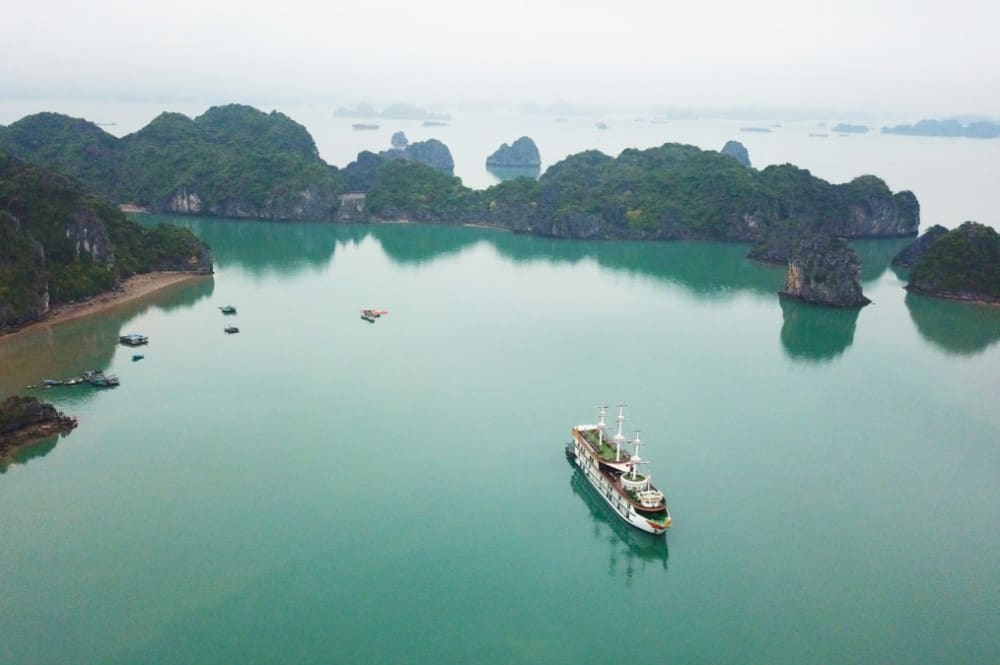
Maya Bay in Thailand
By Ben from Horizon unknown
Thailand is well known for its stunning beaches and crystal waters. Maya Bay, part of the Phi Phi Islands was a prime example of Thailand’s natural beauty. This was until the bay was closed to tourism, and may never re-open to it.
Overtourism is a problem many beautiful places in the world face – the problem only increases as the number of tourists grows. Maya Bay has been damaged so severe, tourism has been suspended indefinitely.
Announced in March, Maya Bay was to shut from June 1st to September 30th but was then suspended indefinitely as the ecosystem will take much longer to regain its health.
Reports of massive amounts of dead coral and an almost non-existent marine life presence brought the ban to protect this beautiful location.
Maya Bay is a lesson we can all learn from. Taking all rubbish with you and disposing of it properly is one thing you can do to help improve not only situations like Maya Bay, but the health of the oceans in general.
Also, respecting all marine life, including corals, is often overlooked in many ways. Touching coral is detrimental to this unique animal. But choosing an appropriate sunblock is also important, as some oils and chemicals in the protective liquid can be very harmful to sea life.
Mya Bay is just one example of overtourism and the negative effects that come along with it. By being aware of our presence and the damage we can potentially cause to marine life, we can help prevent destroying beautiful places to visit for future generations.
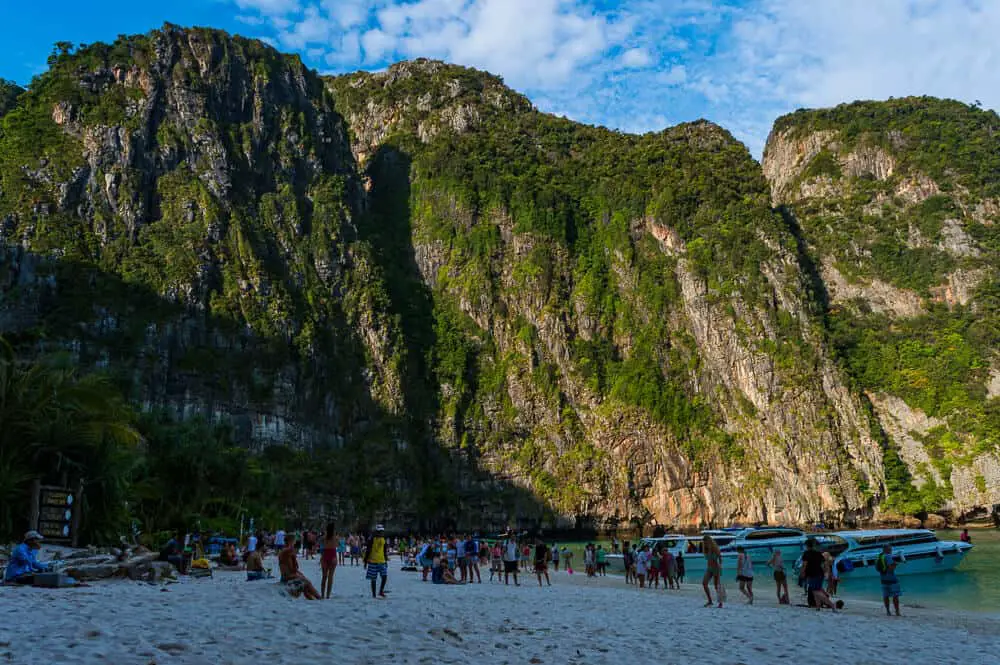
Barcelona in Spain
By Amber from Food & Drink Destinations
Barcelona is always listed at the top of every list of most popular tourist destinations. TripAdvisor just announced its list of top destinations in Europe for 2019, and Barcelona made the top 10. The result is that over the years, Barcelona has also been the poster-child for overtourism. The number of tourists continues to rise, including many cruise ships that arrive each week. The tourism is focused on a handful of neighborhoods, making the neighborhoods too expensive to live in.
Airbnb and similar rental programs have changed the face of these neighborhoods and the people of Barcelona have responded. Arguing that Airbnb is why locals can no longer afford to live in the city, the population has increasingly turned on the tourist industry. This includes restricting access to platforms like Airbnb and Uber, restricting the number of new hotel rooms added each year, and actual protests against tourism. The Catalan government-funded extensive research into what can be done to make the city more livable for locals and sustainable for tourists.
What can a tourist do to make a trip to Barcelona more sustainable? Try renting a room outside of the main tourist areas like La Rambla and Gracia. Avoid visiting the most famous food market La Boqueria in favor of other markets in less touristy neighborhoods. Visit main attractions like La Sagrada Familia outside of peak hours. Or, visit an alternative destination for some of your stay. Girona is a small Catalan city only 38 minutes by train from Barcelona and makes a great day trip or overnight stay from Barcelona. It’s a medieval city, with amazing architecture and authentic Catalan cuisine. By visiting a nearby city or region it helps to spread the wealth and the tourism dollar and gives a more authentic experience.
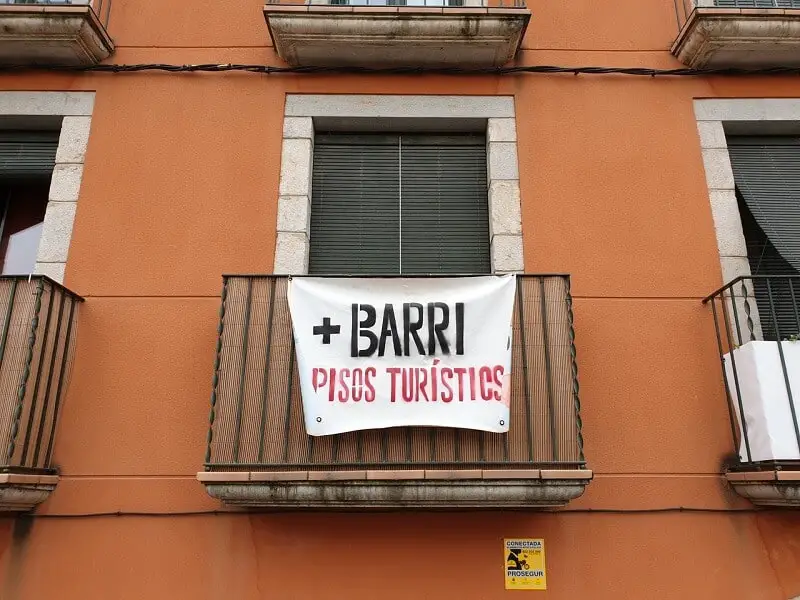
You might also like: 10 Sustainable travel documentaries to inspire a future of better travel
Great Ocean Road in Australia
By Lauren from Faramagan
During our time in Australia, we were very fortunate to drive the Great Ocean Road twice – once in Summer and once in Winter. Both experiences were entirely different and sadly not just because of the change in weather. Our first experience in peak Winter we were treated to a peaceful drive, empty beaches, and crowd-free stops. Our second Great Ocean Road trip, however, we were mainly shocked by the addition of large, ugly crowd control fencing along both sides of the road at the most popular spots.
Not only were we frustrated that this spoiled the stunning scenery and tarnished our photos but more importantly we were angry that this fencing is needed in the first place. In high season, so many cars stop along the sides of the Great Ocean Road, ignorant of the signs that ask you not to do so. Not only does this contribute to erosion, damaging wildflowers, and wildlife habitats but it is very dangerous on the tight, narrow corners when cars are parked illegally and unexpectedly.
There is ample designated parking that is safe and legal along the Great Ocean Road, with views that are understandably breathtaking so why take the risk and contribute to the destruction of this landscape which is already exhausted at this time of year?
Our best advice would be to make this trip in the winter months where your stops will be crowd-free, your drive peaceful and relaxed and not an ugly barrier in site. If unavoidable, during the Summer months simply park where permitted. Whether it’s a 5 minute stop or a 5 hour stop, it is not ok to park up where you fancy as you are not only spoiling it for other visitors that day but future visitors too.
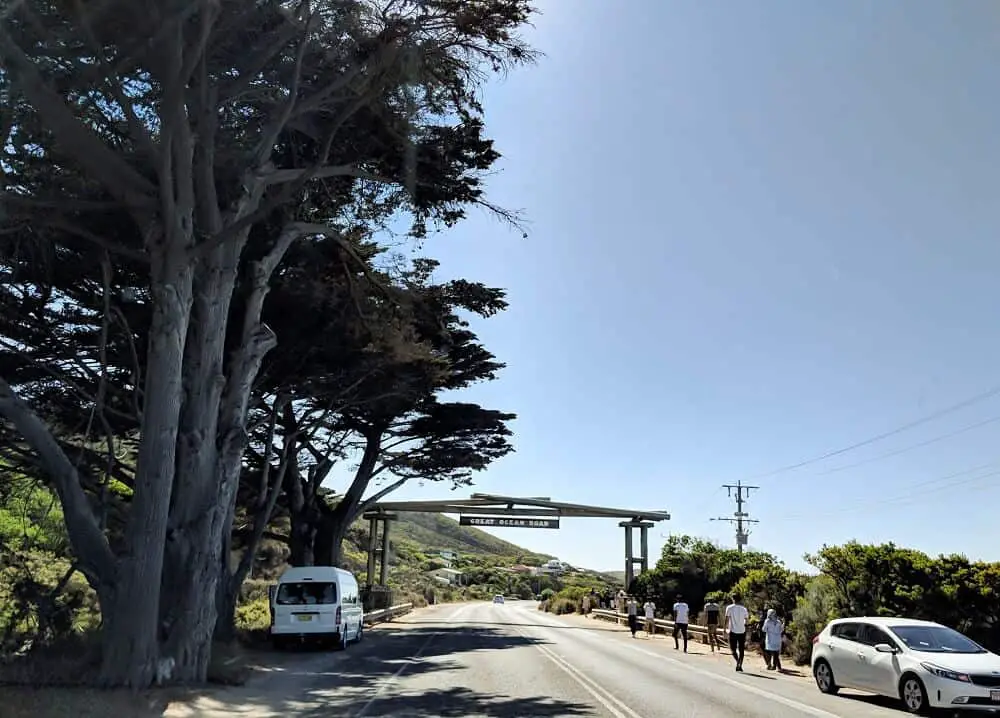
Pondicherry in India
By Sarah from ASocialNomad
Overtourism for me is seen a lot with the amount of plastic waste, especially water bottles, styrofoam, and one-time-use straws and bags. It was very prevalent in India where waste management in many places amounts to dropping it on the ground. I particularly noticed it in Pondicherry – the old French colonial settlement, now a Union territory near Tamil Nadu. Pondicherry, or Puducherry, retains its French colonial charm and is known as being an oasis of “western calm” in riotously noisy and busy India. Leaving the treelined streets and chic boutique hotels of Pondicherry to head into Tamil Nadu we hit the reality of waste management. A river backed up with a raft of food containers and plastic bottles either snagged in the undergrowth or floating by.
Increased numbers of international tourists, who are warned not to drink tap water in India increase the consumption of single-use, plastic water bottles.
Changing the behavior of locals is a generation, but tourists can help by stopping using single-use plastic. Decline plastic bags – carry your own hemp or material bags when shopping. Refuse the plastic straw – carry your own metal ones if you must have a straw. Don’t buy bottled water – stay at places that provide filtered water, and always carry a refillable water bottle. Better still carry and use a filter water bottle to filter out bad tastes, germs, and bacteria. It’s much safer to travel if you have control of your environment – those who are extra cautious could also use a steripen as well as a filter water bottle.

Zhangjiajie in China
By Hamish from My Travel fix
One thing I enjoy about landscape photography is the element of peace and quiet. That feeling of being alone, staring out over an endless vista, breathing in the cool morning air as you peer through the lens – click! Perfect. For me, it’s not all about the image itself. It can be just as much the experience and the story behind each photograph that’s important.
Of course, not all photos have a story but I believe that the best photos are the ones taken where you can cast your mind back to that moment of sublime bliss, watching that early morning sunrise or capturing that frozen landscape.
Where am I going with all of this? Well, I found the profound sense of peace I usually enjoy when photographing beautiful places quite impossible to attain when I visited Zhangjiajie Natural Forest Park in China. Why? Because of the number of people crawling over every surface like blind, hungry ants. Perhaps that sounds harsh. But, it really started to grate on me as I journeyed up from Hong Kong to Beijing last October.
It’s a fact. China has a very large population. But where this wasn’t a problem even ten years ago now the rising middle class is on the move. Everyone can suddenly afford to travel, buy a camera and visit tourist hotspots previously only accessible to wealthy westerners.
This has resulted in huge numbers of domestic tourists which, in my opinion, totally ruin a great number of beautiful destinations like Zhangjiajie – and makes getting an uninterrupted photo quite a challenge!
Unfortunately, I don’t see a solution to over-tourism in Zhangjiajie. In fact, I think it’s only going to get worse as the Chinese population’s rising middle class continues to grow. Does this mean we shouldn’t visit? I don’t think so. If you can handle crowds it remains a worthwhile trip – it is utterly beautiful. It’s just a little busy!

Chichen Itza in Mexico
By Daniela from Andes and Beyond
I’ve always been interested in the ancient cultures of Latin America and when I went to the Yucatán/Mexico in 2018, I was anxious to see the archaeological site of Chichén Itzá and its famous pyramid. I had visited Uxmal on the other side of the peninsula before and it had been an awesome experience.
Unfortunately, Chichén Itzá was a disappointment from the beginning to the end. I had come by bus from Mérida and arriving at the huge parking lot full of buses mainly from Cancún and Playa del Carmen was already a shock. Making it to the entrance through a bunch of pushy and noisy ambulant vendors wasn’t funny, either.
Finally, I stood in front of the great pyramid, similar to the one in Uxmal which I had surrounded several times to admire it from all sides and where I had taken a lot of photos. Here, in Chichén Itzá, I was irritated by this mixture of so-called Instagram influencers posing for their perfect shot and “normal” tourists taking selfies and jumping photos.
I withdrew and went to less popular areas of the site. It was better but unlike in Uxmal, you couldn’t get close to the ruins, they were all roped in. I talked to an employee and he told me it had been necessary to do this as too many tourists had been climbing on the ruins and sooner or later, the structures would be destroyed.
I was also shocked that so many ambulant vendors were allowed on the actual archaeological site. They all sold the same stuff, much of it was overpriced crap and were very pushy. I totally understand that they all need to make a living but it really destroys the experience of trying to understand how the Mayans lived in Chichén Itzá hundreds of years ago.
What can we do to avoid overtourism? Well, in my opinion, you should honestly ask yourself if you visit a place just because everyone does it (and yes, I’m guilty of that, too) or because you’re truly interested in its history, natural beauty etc. And I’ve got absolutely no respect for people who travel somewhere just to get their perfect Instagram shot.
And what can the local government do? I’m not sure. Perhaps visitor regulations for such sites but also allowing less ambulant vendors to work on the actual site. Quality instead of quantity.
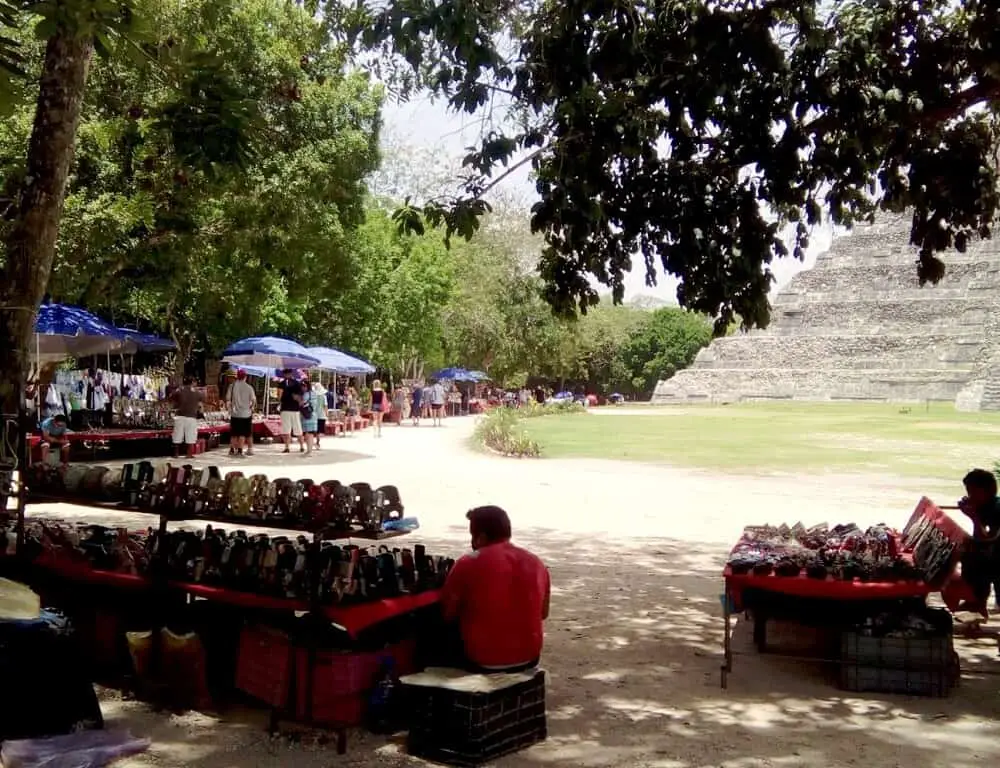
Paris in France
By Ann Marie from Eco Conscious Traveller
Overtourism is definitely an issue in Paris – and that’s hardly a surprise because it is one of the most visited tourist destinations in the world. It’s definitely clear to see overtourism at work when you see the queues for popular tourist destinations such as the Eiffel Tower, the Louvre, Chateau de Versailles and to go to the top of Notre Dame. I lived in Paris for three years and never visited the Paris Catacombs as the queue always starts way too early!
There are many negative effects of overtourism. A very popular tourist destination for many years were the bridges of Paris over the Seine where couples in love locked a lock on the railings and threw away the key – a symbol that their love would last forever. However, a few years ago the locks had to be removed as there were fears that due to the heaviness of the locks the bridge may actually collapse!
Paris is pretty popular for tourists all year round but the warmer months are the most popular. One tip is if you are going to Paris and want to avoid the crowds, I would recommend August. Although the tourists are still there this is the time when the Parisians go on holiday and therefore the city as a whole is a lot less crowded.
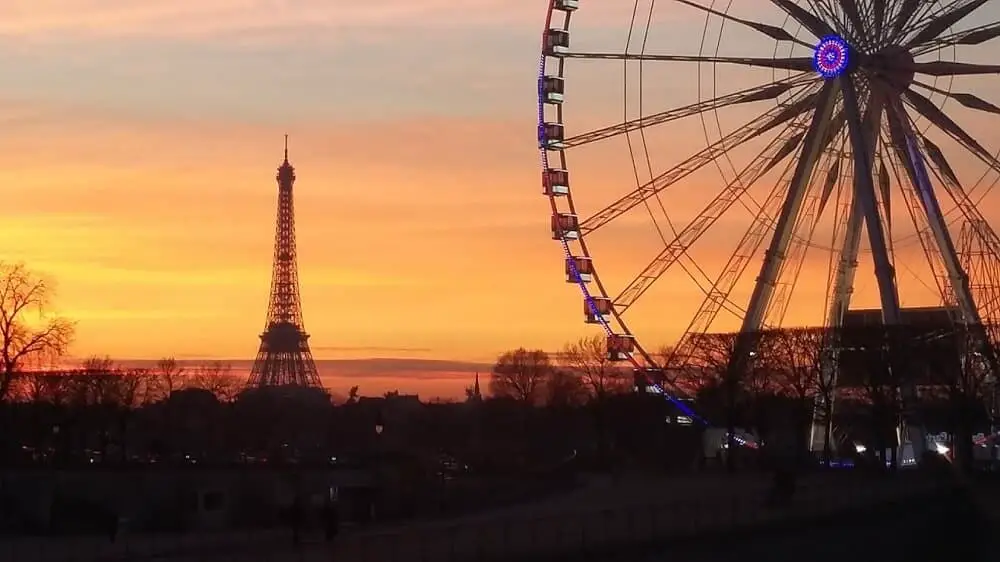
Cinque Terre in Italy
By Katy from Untold Morsels
In the past decade, the five villages of the Cinque Terre, have gone from being sleepy towns and somewhat of a secret, to a tourist destination in need of extreme management. Over 2.5 million visitors passed through the idyllic stretch of coastline in 2016, to spend time in the colorful hamlets that cling to cliff edges overlooking the Ligurian Sea. To put this in perspective, the towns’ permanent residents total 5,000 people.
Many of these visitors arrive from cruise ships docked in La Spezia and in bus tours from as far away as Florence and Milan. The surge of people puts huge pressure on the local infrastructure and services. While there are trains and ferries in summer to transport visitors, often the ferries are canceled due to bad weather, compounding the problem. The local trains have only a small number of carriages.
We visited the Cinque Terre in September 2015 and experienced first-hand the impact of this number of people on a small community. Our day trip from the nearby town of Santa Margherita Ligure started well enough but descended into chaos when we discovered that the ferries had been canceled due to bad weather. This meant visitors had to travel from village to village by train. Platforms and carriages were overcrowded and no one seemed to mind pushing and shoving. People trampled over our 2-year-old twins in their stroller and I have never felt more frightened for their safety. In the confusion I had my wallet stolen. Needless to say, that day was memorable for the wrong reasons.
To avoid the crush and experience the beauty of the Cinque Terre and Italian Riviera region we suggest visiting out of peak season in late March or early October. Consider staying overnight at one of the villages so you can wander them in peace. If you are going on a day trip, check the cruise timetable and avoid days when there are ships docked in La Spezia. Trains will be overcrowded when the boats are canceled so you should avoid those days too. But our best tip is to stay along the coastline in one of the many other beautiful, colorful and much less crowded towns of the Italian Riviera where you can enjoy la dolce vita and a taste of Italian life in the sun.
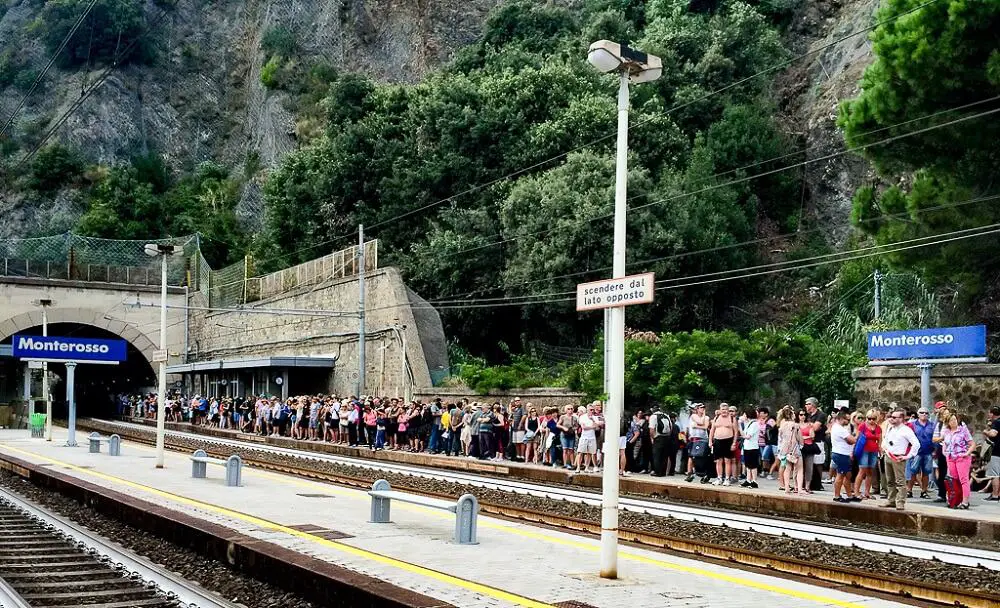
Algarve in Portugal
By Izzy The Gap Decaders
The Portugese Algarve is a mecca for tourists all year round. In summer, families with small children flock here from northern Europe to enjoy the sunshine and beautiful beaches. Towns are full of ‘urbanizations’; purpose-built apartments to house holidaying families in small square blocks, taking up the smallest footprint possible. So far, so normal….
In winter, a plague of motorhomes descends like locusts on an area of just 5,000 km2. From October to March, the Algarve expects 180,000 motorhomes; that’s 36 motorhomes per square km.
Last year, we spent a fabulous few weeks in the western coast of the Algarve, marveling at the mighty Atlantic waves, awesome in their ability to shape the coastline. We traveled down this unspoiled and dramatic coast in our motorhome, congratulating ourselves on a ‘find’, every wild campers dream; amazing views and no other people!
As we arrived at the lighthouse in Sagres, the most south-westerly point of Portugal, a shock awaited us. A literal car-park of motorhomes as far as the eye could see, sunroofs and solar panels glistening in the late afternoon sun.
This is the case all along the south coast of the Algarve, motor-homers attempting to wild camp in every nook and cranny, saving a few euros and dumping their black and grey waste indiscriminately.
Brexit, for all its’ faults, may have a positive impact on this overtourism, Brits abroad will no longer be able to spend six months in the Schengen area, forced to be locusts in Morocco or Croatia. This does not solve the problem though, just moves it along to another country.
With the growing trend for motorhome ownership across Europe, it is not clear what the solution is to motor-homers seeking winter sunshine and an easy (and cheap) lifestyle. Maybe the western move towards electric vehicles and the ‘shrinking’ of globalism will provide a much-needed respite to motorhome overtoursim? Nonetheless, you can do your part to make your RV travel sustainable.
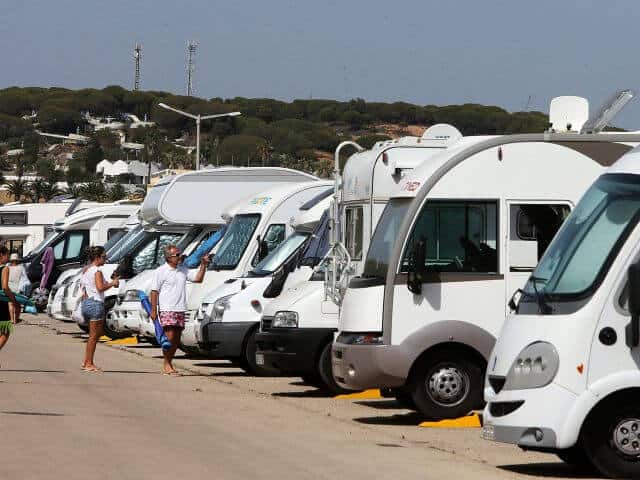
Hoi An in Vietnam
By Joanna from The World in My Pocket
I first discovered Hoi An almost 7 years ago and fell in love with it straight away. Back then it was a charming little town, with its fair and share of tourists, but still pleasurable and enjoyable to walk through. I returned to Hoi An in January this year and I was shocked to realize that it’s impossible to walk on the streets anymore because of how many tourists there are. The city has bloomed as well, with many new constructions on the other side of the river, which was once empty.
I think that the problem in Hoi An is that the city is constantly encouraging tourism. Last year, over 3.2 million people visited Hoi An. If you think that the Ancient Town of Hoi An spreads only on a surface of 0.3 square kilometers, you can imagine how damaging tourism is to the city.
Once a backpacker’s paradise, with hostels and budget restaurants, today Hoi An has transformed, with a seafront of luxury resorts and expensive eateries in town, most of which caters to the South Korean travelers and attracting them with menus written in their language. Due to a visa agreement between the Vietnamese and the South Korean governments, the number of tourists from this country has raised considerably and it is forecasted to go up with over 30% this year. With direct flights from South Korea to Da Nang (the closest airport to Hoi An), tourists can fly directly here instead of passing through Hanoi or Ho Chi Minh City Airport.
When I visited, 7 years ago, the beach was a paradise, with only one resort tucked away from the main road. Today, there is hotel by hotel by hotel, with plenty more building sites spreading all the way to Da Nang, a city around 20 kilometers away.
As many other important sites have done, I think that Hoi An should limit the number of tourists allowed in the Ancient Town every day. Currently, there is a ticketing system, but one can easily bypass it. Whilst the local authorities want more tourists to spend their money in the city, unfortunately, the town is suffering.
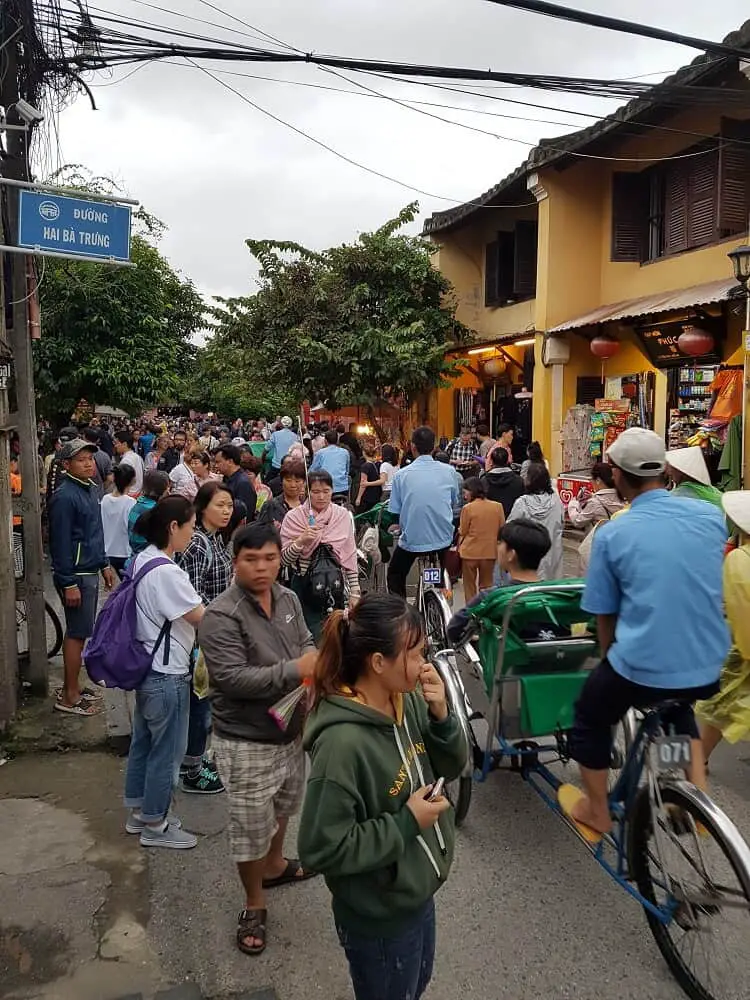
Tegallalang rice terraces in Indonesia
By Rachael from Everywhere and Back
Visiting Tegallalang just outside Ubud, Bali looked amazing in pictures. The steep rice terraced valley that Bali is known for seemed to be the ideal stop on my trip. Arriving there, I was saddened to see what it really was. The top edges of the valley were lined with businesses, along with many different “Bali Swings”, a drone was flying overhead and there were people everywhere walking amongst the rice terraces.
I traveled there in January during the offseason and it was still very crowded; so I can only imagine how bad it is during the main tourist season. Because of the overcrowding, I did pay the entrance fee but opted to not walk down on the terraces with the hopes of not contributing to the land being further destroyed by foot traffic, but still getting to see the terraces from the upper edges.
After leaving the Tegallalang Rice Terraces, I was driving down the streets thru the area was able to see other rice terraces that were not popular with tourists but equally as beautiful. I decided to stop and take pictures from the side of the street next to the terraces without actually hurting the fields that are so important to the people that live here. If you are able to do so try to find a place to stay that is on a rice field and you will be able to see the terraces all the time and not have to worry about other visitors or hurting the land.

Amsterdam in The Netherlands
By Manon from Visiting The Dutch Countryside
One other destination that has huge problems with over tourism is the capital of The Netherlands, Amsterdam. With only a little over 800.000 permanent residents, Amsterdam gets around 7 million visitors year-round. The number of tourists is at its highest point from April, when tulip season starts, until August. But throughout the entire year, Amsterdam is visited by a lot of people.
One of the issues we are facing in Amsterdam is that all local shops were slowly forced out of the center by souvenir shops for several reasons. So, one thing you can do to help the local people is to go into local boutiques, or shops to buy yourself a more special souvenir instead.
Another issue is the immense housing problem that we are facing in Amsterdam and one extra trouble in this current madness is AirBnB, which forces locals out of their homes. Landlords simply make more money by renting their place out to tourists than to locals. The council of Amsterdam has now set rules for Airbnb users and asked the company to exchange data so they could see whether someone broke the rules or not. Now, Airbnb doesn’t enforce the rules that the council created. Thus it’s best if you don’t book with Airbnb, but stay in hotels or other accommodation instead.
Another tip is to visit less known spots in Amsterdam and The Netherlands instead. Amsterdam is more than the red light district, Museum square and Dam square, and when you go beyond these areas, you will discover the local part of Amsterdam without the masses of tourists. And I can assure you that you will love it.
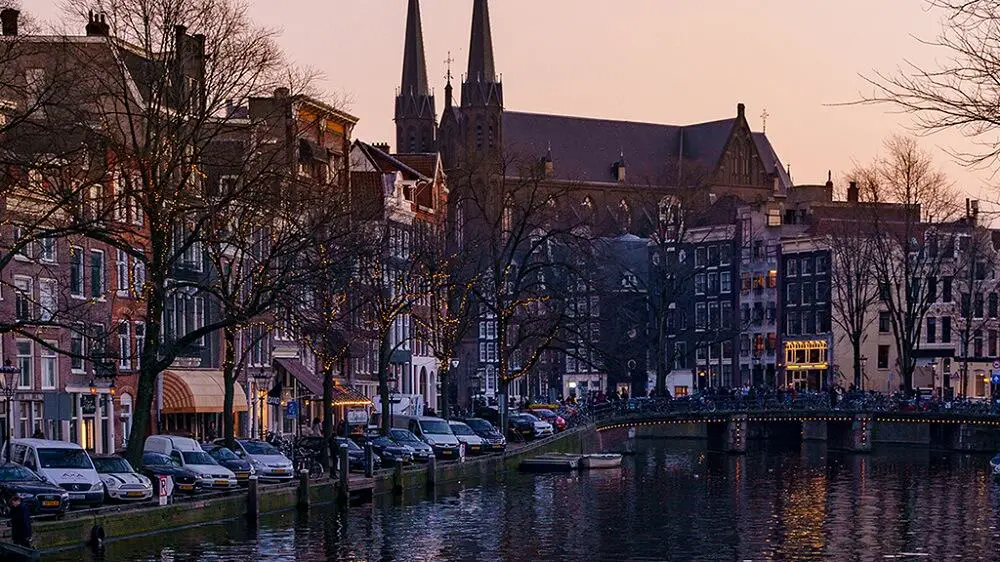
Santorini in Greece
By Tiffany from A Girl and Her Passport
Santorini has become increasingly more and more popular. With the addition of cruise ships coming every day and most of the time several ships a day. When I was there in September, which is supposed to be the shoulder season, it was so crowded with tourists I got caught in foot traffic in Oia. I stood still for a good 10 minutes waiting to walk back to my hotel.
The increase in tourism has also increased the prices of hotels, which in turn has made it too expensive for Greeks to rent houses in the popular areas of Santorini. Many homeowners have turned their properties into Airbnb rentals instead of renting to locals.
To avoid the crowds, go to Santorini after September and before May. The weather may be cooler, which will be good for most of the activities except swimming. However, it may be wetter than usual. Some places will shut down over the winter, but the hotel prices will be much lower in the offseason. You may even get to see some local winter festivals in the villages if you go in the winter. If you want to avoid the crowds in Santorini all together, go to another Greek island. There are over 200 inhabited ones! I recommend Naxos as a great alternative in both crowds and prices.
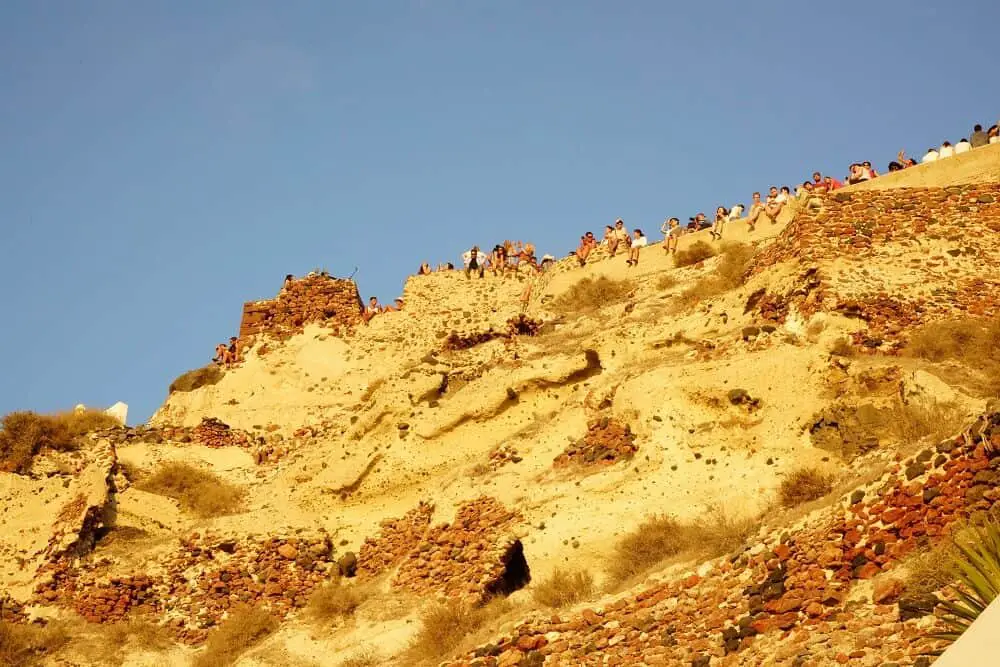
Colmar in France
By Elisa from France Bucket List
Colmar is one of the most beautiful cities in the former region of Alsace (today Grand Est region) and a must of any Alsace road trip. The city is well known for being the birthplace of Frédéric Auguste Bartholdi, the sculptor of the Statue of Liberty in New York, but especially for its beautiful setting and colorful architecture of timbered houses so typical of Alsace and its Christmas Market, one of the best Christmas Markets in France. Finally, Colmar is also a great place for tasting the regional cuisine, with world-famous dishes such as flammkuchen or the choucroute.
Colmar was on the top of my France bucket list for many years and finally, I had the opportunity to visit it last October during my Alsace road trip. I cannot say that Colmar did not meet my expectations in terms of beauty: the city is so pretty that it is a photographer’s paradise! However, it is also crowded by tourists, and basically, all the beautiful houses in the historical center are dedicated to souvenir shops or tourist restaurants without any local feeling.
What travelers can do to avoid contributing to overtourism in Colmar? We recommend avoiding the weekends when the Germans living in cities close to the border come for a day trip or weekend getaway. Also, the Christmas period is very busy, due to the fame of Colmar’s Christmas Market and beautiful decorations. If you are traveling by car, we suggest finding accommodation in one of the cute small villages around, with better hotel prices and a more local feeling.
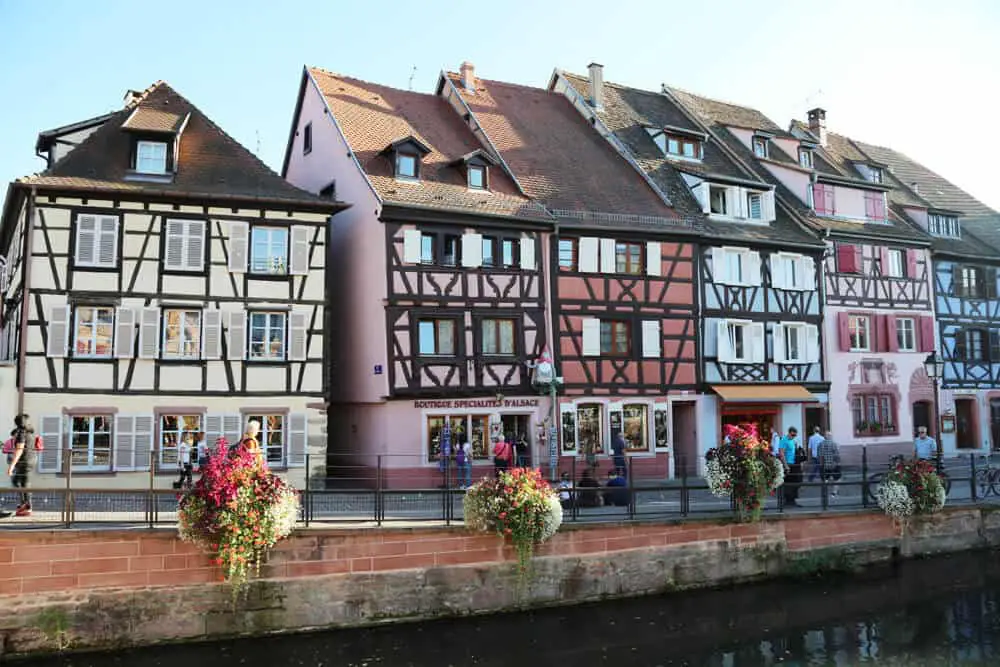
Bali in Indonesia
By Kyla from Where is the World?
After traveling to over 60 countries, Bali is the one place where I most acutely felt the effects of overtourism. The beaches and ocean are full of garbage, traffic is absolutely crazy, and the locals seem to have an expectation that every tourist is going to overpay for anything. The dark side, that isn’t obvious on the surface, is the freshwater problem. Bali welcomes over 5 million tourists a year, putting a strain on this small island’s ability to provide everyone with fresh water.
This large number of tourists also require hotels, villas and other sleeping space, and they’re willing to pay for it. Many farmers have sold their land to make room for these various forms of accommodation for tourists, decreasing the amount of agricultural produced on the island. Items now need to be imported increasing the cost significantly, making it more expensive for the locals to live.
This doesn’t mean you shouldn’t visit Bali, it just means you should be more aware of your impact when you travel there. Look at lesser-visited areas such as the Northern coast and Western peninsula. Be cautious of your water usage and question everything you do and whether it results in a positive or negative impact on the people and environment it touches.
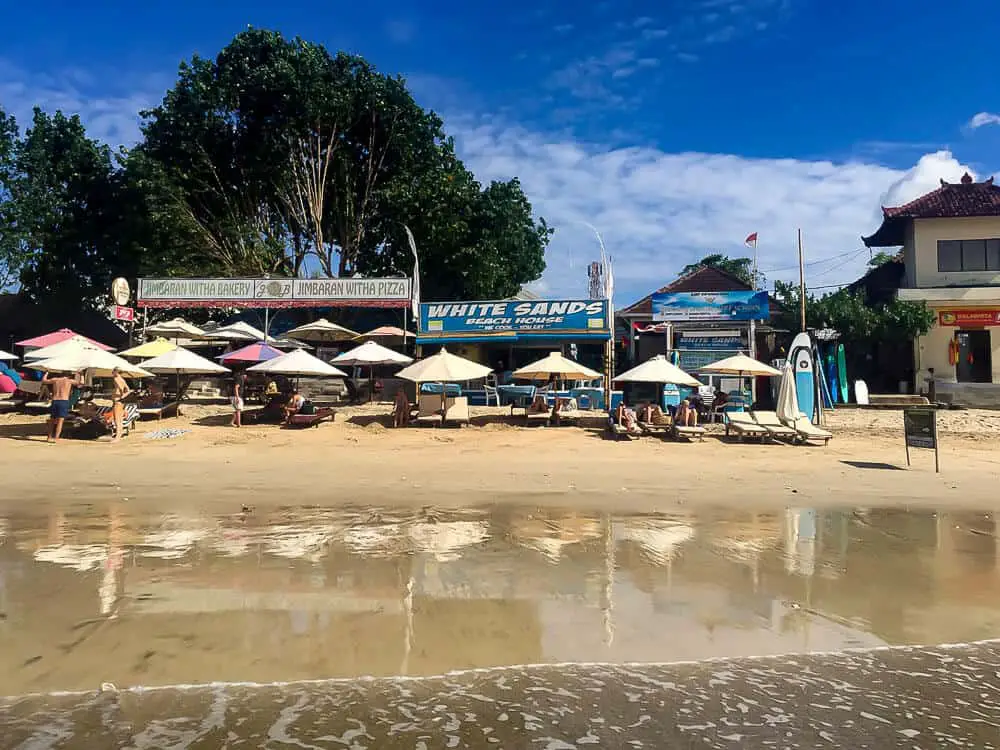
Venice in Italy
By Michaela from Rocky Travel
Venice is for most travelers a once-in-their-lifetime holiday, but not all of them are aware of how fragile this unique Italian city is. With 30 million visitors a year, it is one of those iconic places in Italy that is most affected by overtourism. Being a car-free city, it’s apparent that you can only move around either on foot or with a Vaporetto (city ferry). The masses of people that go through the calle (narrow dead-end streets) is something that the locals have to cope with every day, 365 days a year. The city is merely collapsing, and there is an urge to find solutions to this suffering.
Tourists can follow simple habits to help counter the side effects of overcrowded Venice; at the same time, new regulations are coming into place for those visiting on a day-trip. Starting from September 2019, all locals in Italy arriving on the train to Venice will have to pay a city tax of 3 Euro on top of the standard train ticket. But this is only one of the many city rules that the municipality of Venice is going to introduce to prevent people from flocking in masses and regulate flows.
One simple thing is to visit during the week and avoid weekends, while there is no peak and low season for Venice try to avoid a trip to Venice during the Carnival or the Redeemer Festival in July and when other festivals take place. Moreover, if you like to join a guided tour, prefer a small group of people instead of going with a large group. Do not linger outside bars or osterias late at night to respect the privacy and sleep of the locals. Also, limit your stay on bridges, and enjoy a panorama from other vantage points, there are so many hidden corners. And first and foremost don’t focus only on the iconic places like San Marco Square, instead, explore the unusual places of Venice.
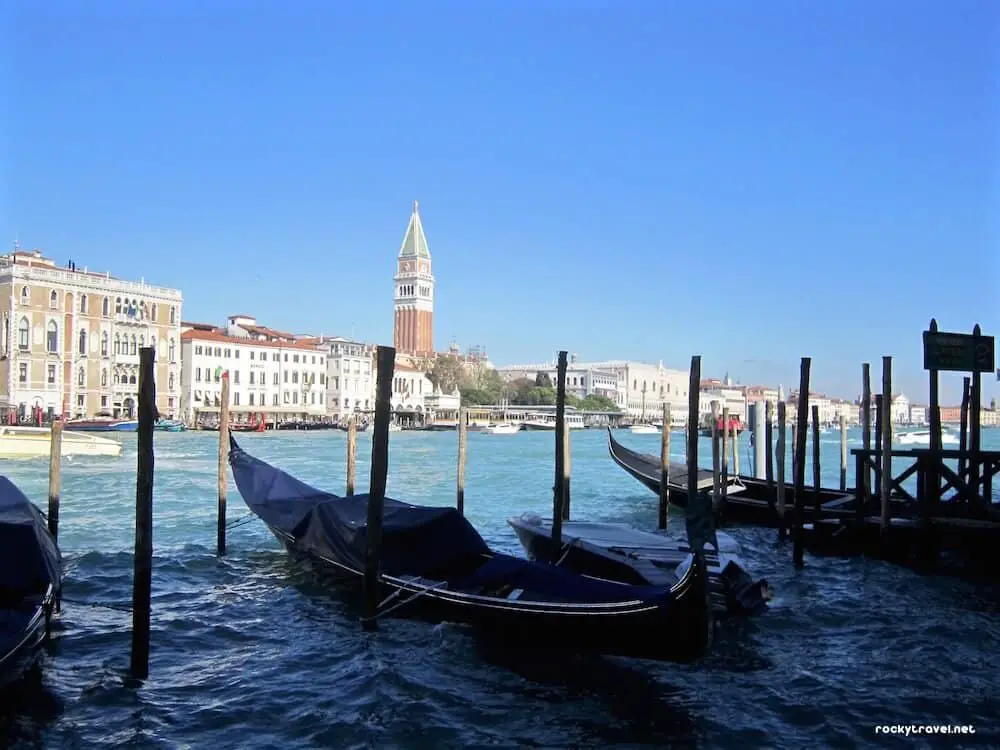
Brighton and Hove in England
By Danielle from Live in 10 Countries
Unpopular opinion alert, but I’m putting forward Brighton and Hove as a spot that has really felt the weight of tourism. It started with the Victorians, who all went there for the beach and, although lots of us Brits now like to jet off abroad, the beach and pier are still packed on any given sunny day.
So, what’s the problem? Well partly geography – Brighton is a city on the South Coast of England with some fab attractions and it’s only a quick, enticing hop from London. In fact, people from the capital are so common on the weekends they’ve earned a local nickname – DFLs, or Down From Londoners. That all swells the seaside haven a lot – Brighton is just too nice and beachy for its own good.
Another factor, something that Brighton should be very proud of, is its reputation as an openminded spot, exceptionally welcoming of the LGBT community and all things alternative. This makes it a number one choice for stag and hen dos – which is probably more fun for the revelers than the locals. Brighton Pride is top 5 among the UK’s pride fests and last year led to stampedes and an ocean of plastic waste strewn by the hordes who attended.
Overtourism has really affected the local wildlife too, with seagulls now unusually aggressive and sometimes willing to peck snacks out of the tourists’ hands. If you’d like to be part of the solution, not the problem, start by cutting down cars in the city. Come by train or use the excellent park and ride service. If you spend time on the beach, leave no trace, and consider dividing your visit with other local seaside towns overcrowded periods like the summer.

Bangkok in Thailand
By Lexx from Travel Lexx
It’s safe to say that a city that consistently tops “world’s-most-visited” lists is going to have its fair share of tourism-related issues. Bangkok welcomed more than 20 million visitors in 2017 (latest figures available) and its popularity shows no signs of waning. Its heady mix of spectacular sights, exciting food scene, and buzzing nightlife has seen the Thai capital thrive amidst the Southeast Asian boom.
With Thailand equally as attractive to fly-and-flop holidaymakers, Banana Pancake Trail backpackers and culture vultures, Bangkok is never “quiet”. The city’s status as a gateway to the rest of the country (and South East Asia) contributes further to its number of visitors. Crowds at popular attractions can make sightseeing less than enjoyable, especially during busy Western and Chinese holidays.
With many locals relying on tourist dollars, Bangkok’s authenticity has long been threatened. Catering to visitors’ tastes and desires may be well-meaning but distills the experience for all parties. Some street food vendors and restaurants try to appeal to Western palates by toning down levels of spice in traditional recipes. Authentic handicrafts and gifts are being replaced by tacky souvenirs and fake designer clothing. Scammers are becoming more inventive.
Just a short stroll along legendary Khao San Road is enough to see what overtourism can do to a destination. The traveler hub of Bangkok is loud, seedy and caters fully and unashamedly to outsiders. Elsewhere locals are being priced out of their own neighborhoods by rapid development.
Bangkok is one of the most eclectic, vibrant and exciting cities in the world and visitors can play an important role in promoting sustainable tourism. Supporting established family-owned businesses, joining local community-based tours such as ones offered by companies like Local Alike and choosing eco-friendly stays like Bangkok Tree House can all contribute to visiting this incredible city responsibly.

London in England
By LC from Birdgehls
London is one of the most visited cities in the world, seeing around 20 million foreign visitors step into its borders each year. This is more than double the population of the city itself, which is numbered at around 8 million.
You certainly see the effects of tourism in and around the city.
The pavements are crammed with people at Oxford Street and Portabello Road. You can barely move for space in Picadilly. The lines to board the London Eye or enter the Tower of London are miles long.
When I lived in London, I’d go jogging over Tower Bridge on my lunch break – a straight path, which soon turned into an agility course as I tried to dodge the tourists and selfie sticks in my way.
There are people everywhere. It’s hard to catch a moment of quiet, to find peace in this ever-churning and changing city.
London is a central hub, even for air travel alone and for many traveling around the world, it’s an unavoidable destination.
However, there are plenty of other cities in the UK worth visiting, many of which aren’t far from London at all. Some of my favorites are Bristol, Brighton, Leeds, York and Newcastle upon Tyne, which at their furthest, are about a couple of hours away by train.
Not to mention the UK’s beautiful national parks, littered throughout the island – the Cotswolds, Peak and Lake Districts, the Scottish Highlands or the entire country of Wales, which is a very underrated destination.
At the very least, do your best to not stand out as a tourist in London. Don’t be loud and obnoxious, keep to the right on escalators and do not – I repeat, DO NOT, make eye contact on the Tube.
Here are some other tips (albeit, slightly tongue in cheek) on looking like a local in London.
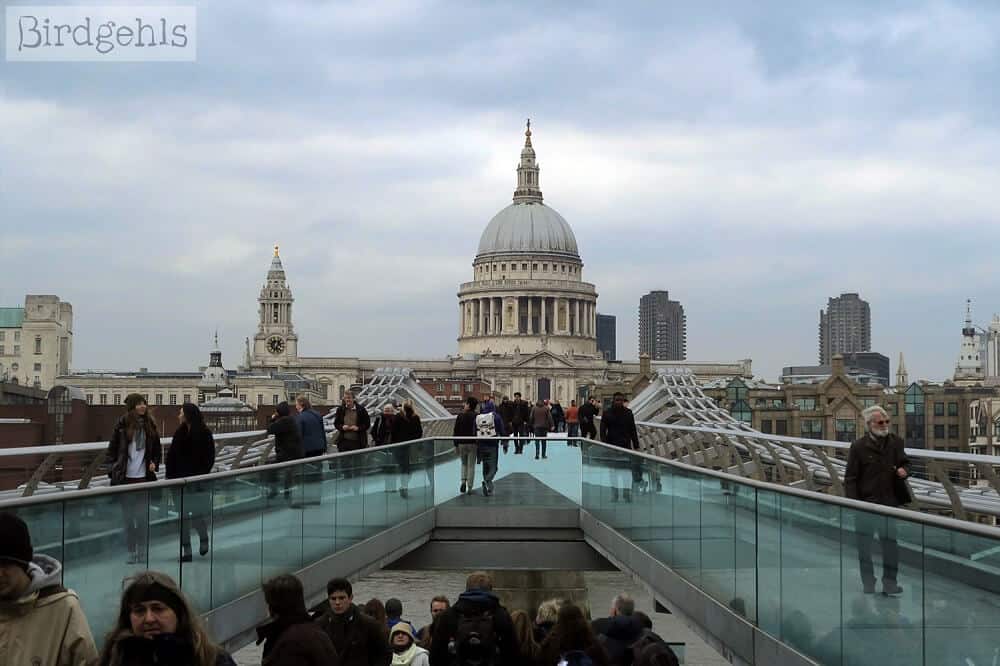
Saipan in the Western Pacific
By Chris from CTB Global® (Chris Travel Blog)
Over tourism comes in various ways. It can be something that’s just annoying with too many people in the same place or destructing for the environment which is something much more difficult to overcome. Saipan, in the Northern Mariana Islands, is a must-see destination for any person interested in World War II history. If you are then do add Saipan to your Pacific Island-hopping itinerary. If you’re looking to get away on a tropical island, then, choose another.
Saipan, although an overseas territory of the US, has legalized gambling. This attracts A LOT of Koreans, Japanese and Chinese visitors. Huge new hotels are being built which are dozens of stories high. They really stand out in a bad way between the low buildings that made up the towns in the past. The second problem is that if all these tourists aren’t gambling, they are out on the beaches and snorkeling. Most of the corals around Saipan are damaged, not by the environment but people stepping on it. There are good diving spots, but they are far more out. Too many tourists on a small island (photo is a smaller island off the coast) simply doesn’t work.
If you aren’t visiting Saipan for its WWII history, then choose another Pacific island. Go for Palau if you want the best white beaches and great snorkeling spots. It’s not that much developed. If you want to go really off the beaten track, then Yap island is where you should go. Something more south? A Solomon Islands itinerary fills easily a week or two. If you want to avoid overtourism, then don’t go to Saipan unless WWII history is what you’re looking for.

Should we stop traveling to our bucket list destinations?
After reading this, you might think that all of your bucket list destinations just got proven ruined by overtourism. And most of them probably are. So, does that mean that we should all stop traveling? No. It has been said several times by the experienced travelers above, but I will repeat it. We should definitely not stop traveling. Instead, we have to look at solutions.
Ask yourself questions before you make your choices.
What can we as travelers do? As a resume of what has been said by so many others above, what we have to think about are the consequences of our choices and actions as travelers.
Avoid the masses. Could that be by going to a different country or town? Could it be to travel in the low season?
Think about where you stay. Is there an eco-friendly and sustainable hostel you can choose at your destination? How is the local situation at your destination? Should you stay at AirBnB or does that support the fact that locals are pressed out of their homes?
Think about your footprints. Could you travel with a filtered water bottle instead of buying large numbers of plastic bottles on your trip? Should you snorkel at a site together with thousands of other tourists or could you find a lesser visited snorkeling spot?
Leave your money with the locals. Could you go to a less-visited part of town and shop in a local shop instead of the tourist traps in the city center? Could you go to markets visited by fewer tourists and leave your cash there instead?
There are a lot of options out there, we just need to look for them.
Have you experienced a place with severe overtourism? Share your story in the comments.
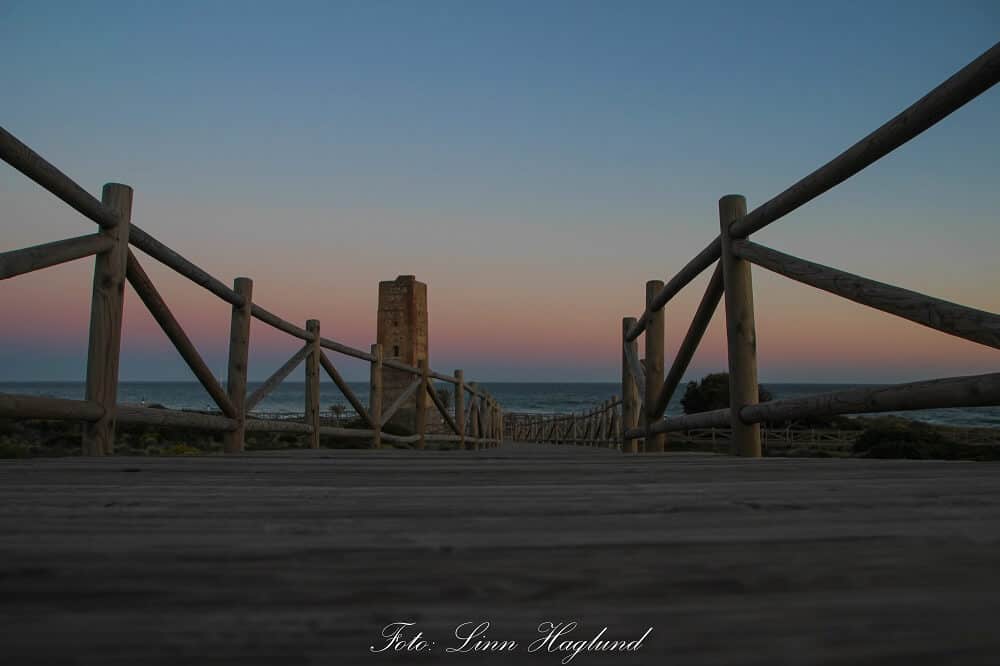

Great post! This is something I’m definitely becoming more and more concerned about! I recently visited Venice and it really brought the issue to my attention. I tried to venture away from Piazza San Marco as much as possible. I’m going to Lisbon soon as well so I will definitely keep your tips in mind!
Hi Emma, overtourism is absolutely more and more noticeable nowadays. Hopefully, we can spread awareness so that more and more travelers think about the consequences of their trips. Personally, I get more often “should I have gone there/done that” moments than ever before so I try to learn as much as possible so I can leave a more positive impact on the destinations I visit. Sure it is not always easy when traveling on shorter trips.
Great post. it’s bit of a rope act – of course we want to see the sights but the off the beaten track ones are sometimes so much more appealing. I prefer to ‘tick off’ the must see sights at the start of the trip as I always worry that they may be a let down after seeing something more authentic. Don’t think I’ll ever try a cruise, just find these large groups of people moving at the same time scary and am somewhat opposed to the herding philosophy 😉
Thank you! That is absolutely a good way of doing it. And of course, it gives more time to experience the offbeat destinations at the end. I have never been a fan of the thought of cruises either;)
Fantastic post. Saving this for reference later as well. I had a very similar experience in Chichen Itza- disappointing- couldn’t connect with the history as I’d hoped to. I whole heartedly agree with the need to re-analyze whether I should go to a place just because everyone else is, and not to jump on that attempt at influencer for those perfect poses. Thanks for this!
Thank you! It is a complex issue that died with the worldwide pandemic. Hopefully, local governments will take measures when travel pick up again and I really hope individual travelers will travel more responsibly in the future so it doesn’t go back to what it was.